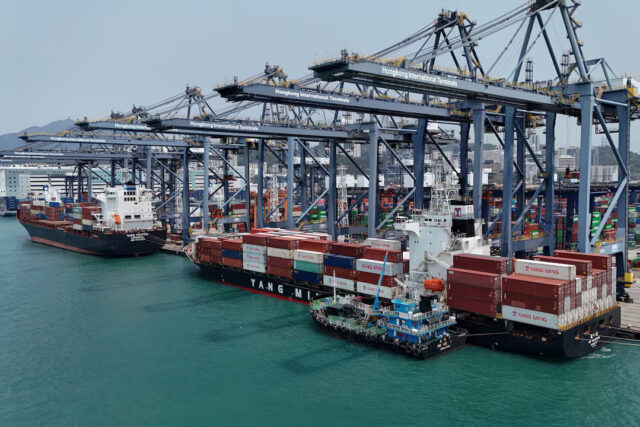
On Friday, China retaliated against U.S. tariffs imposed by President Trump, introducing countermeasures such as a 34% levy on all U.S. goods and export restrictions on certain rare earths, escalating the trade war between the world’s two largest economies.
Beijing also imposed restrictions on about 30 U.S. organisations, mostly in defence-related industries, adding to the already two dozen U.S companies punished over Trump’s tariffs.
‘China Panicked’
Beijing’s sweeping retaliation comes after Trump slapped the world’s No. 2 economy with additional 34% tariffs on Chinese goods, bringing the total new levies this year to 54%. Trump also closed a trade loophole that had allowed low-value packages from China to enter the U.S duty-free.
“The U.S move is not in line with international trade rules, seriously undermines China’s legitimate and lawful rights and interests, and is a typical unilateral bullying practice,” China’s finance ministry said.
China called the new round of U.S tariffs a “blatant” violation of World Trade Organization rules and have requested consultations at the WTO.
Trump accused China of panicking in a comment on Truth Social.
“China played it wrong, they panicked – the one thing they cannot afford to do!”, he wrote on Friday.
Tit-For-Tat
China’s finance ministry matched U.S. duties with additional tariffs of 34% on all U.S. goods from April 10, on top of the 10%-15% tariffs it imposed on some U.S. agriculture goods in March and 10%-15% tariffs on some energy and farming machinery in February.
Agricultural trade took a deeper hit as Chinese customs imposed an immediate suspension on imports of U.S. sorghum from C&D (USA) INC, as well as inbound shipments of poultry and bone meal from three U.S. firms.
China’s biggest imports from the U.S. are soybeans, oilseeds and grains, amounting to $13.4 billion in 2024, as well as $14.7 billion of various fuels and $15.3 billion of electrical machinery, according to U.S. trade data.
“With 34% tariff it will not be possible for U.S. agricultural products to enter China. It is an opportunity for other exporters like Brazil and Australia to increase their market share in China,” said Ole Houe, director of advisory services at IKON Commodities in Sydney.
Rare-Earth Curbs
“As the old Chinese saying goes: ‘Courtesy demands reciprocity’,” said Guo Jiakun, a spokesperson at the Chinese foreign ministry, in a post on Facebook after the announcement of the Chinese countermeasures.
Beijing also announced controls on exports of medium and heavy rare-earths including samarium, gadolinium, terbium, dysprosium, lutetium, scandium and yttrium to the United States, effective April 4.
It added 16 U.S. entities to its export control list, which prohibits exports of dual-use items to the affected firms. The affected include 15 companies in industries including defence and aerospace, as well as non-profit group Coalition For A Prosperous America, which in the past had advocated for the Trump administration to decouple the U.S. economy from China.
Another 11 U.S. entities were added to the “unreliable entity” list, which allows Beijing to take punitive actions against foreign entities. The targeted firms include Skydio Inc. and BRINC Drones over arms sales to democratically governed Taiwan, which China claims as part of its territory.
It also launched an anti-dumping probe into imports of certain medical CT tubes from the U.S. and India, as well as an investigation into Dupont China Group, a subsidiary of the U.S. firm DuPont for alleged violation of China’s anti-monopoly law.
“The application of the export controls on these key materials plus some of these additions to the unreliable entity list reflects China’s growing tool-kit to retaliate in trade wars,” said the Mercator Institute for China Studies’ lead analyst for the economy Jacob Gunter.
Chinese Yuan Tanks
The Chinese yuan has dropped to its lowest level in seven weeks and stock markets slumped on Thursday after Trump unveiled his reciprocal tariffs that were particularly heavy on China.
Trump has ordered the U.S. Trade Representative to determine whether China was living up to its commitments under the 2020 “phase 1” U.S.-China trade agreement by April 1.
The deal required China to increase purchases of U.S exports by $200 billion over a two-year period, but Beijing failed to meet its targets when the COVID-19 pandemic struck.
China bought $154 billion in U.S goods in 2017, before the trade war began, Chinese customs data shows, and that figure rose to $164 billion last year.
“I used to buy some American products, but if the price increases I might buy less,” said Huang Zhe, 24, who works in China’s luxury sector.
(With inputs from Reuters)




